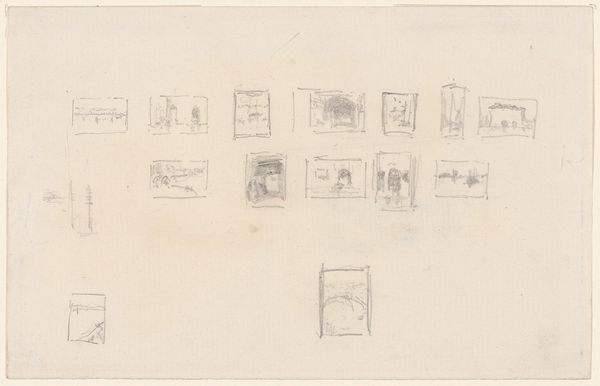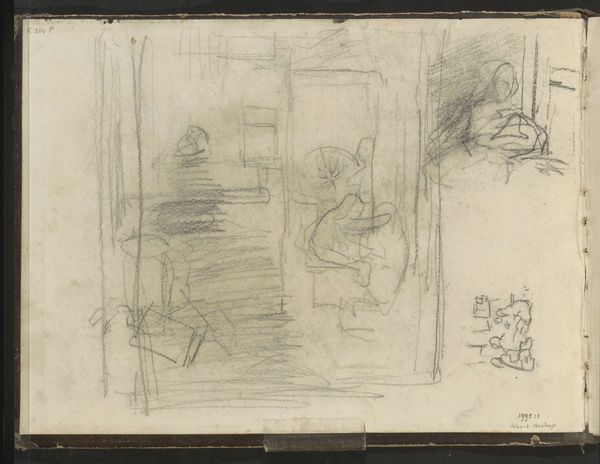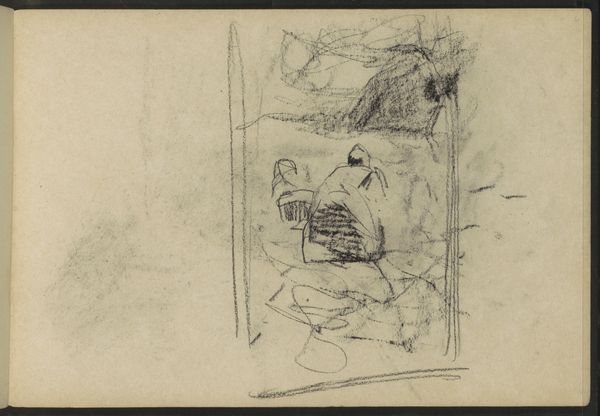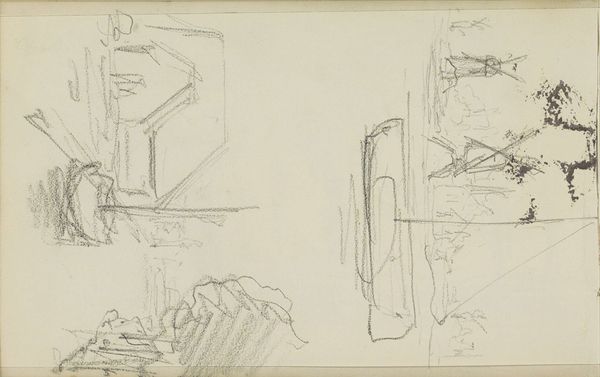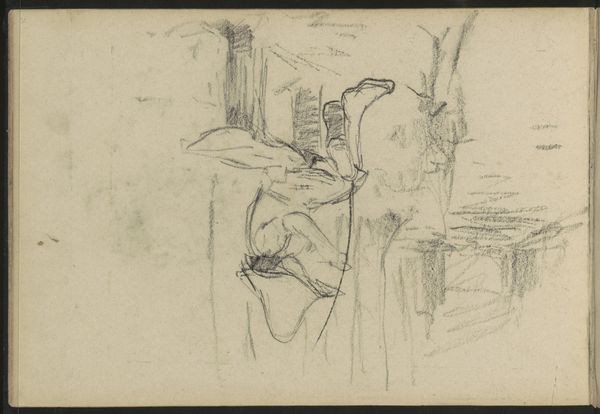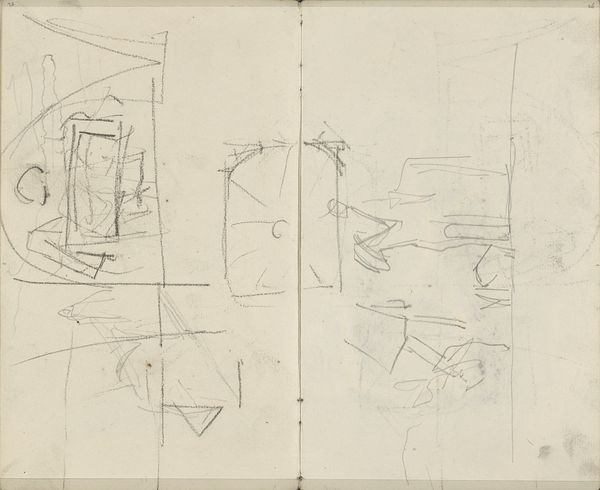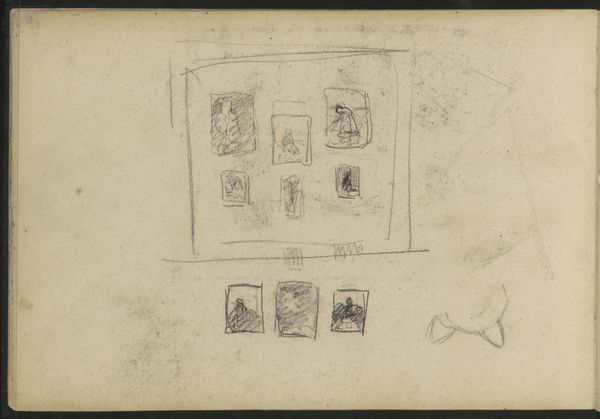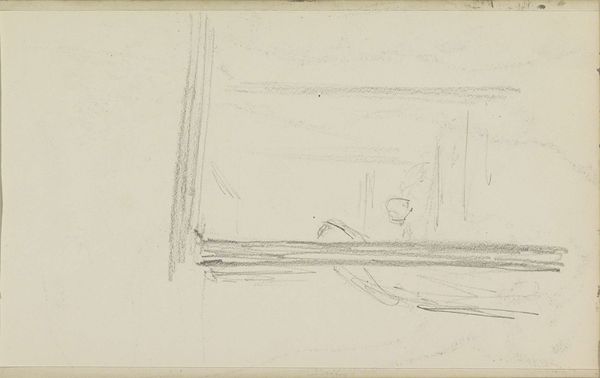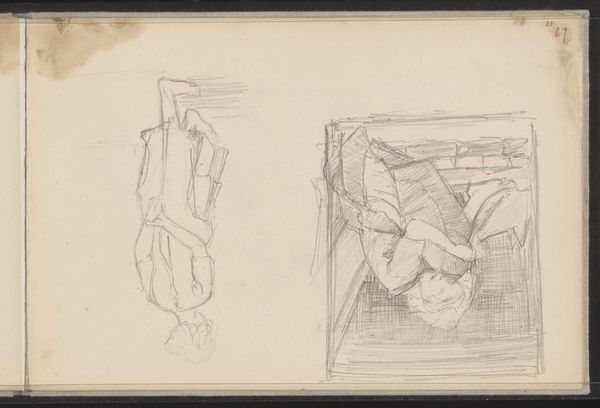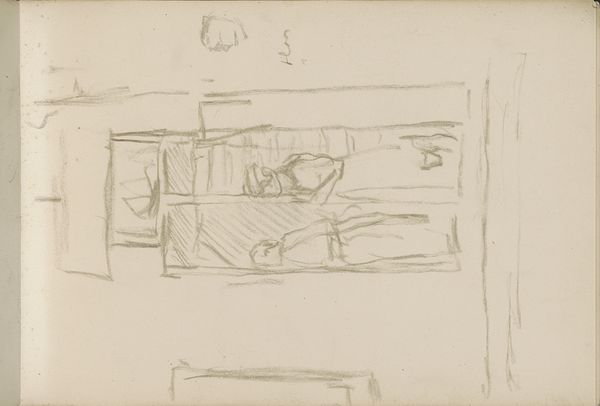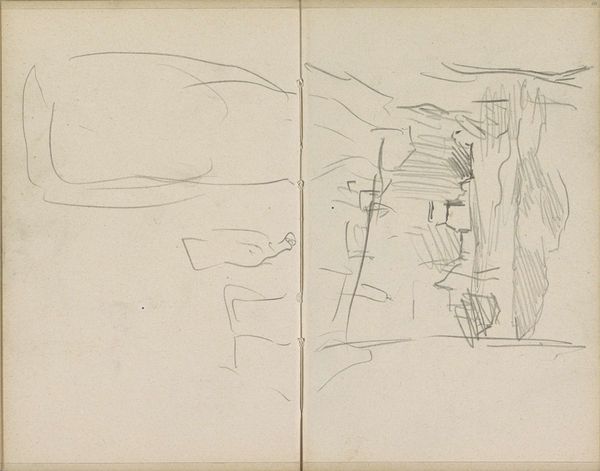
drawing, paper, pencil
#
drawing
#
impressionism
#
pen sketch
#
landscape
#
paper
#
pencil
Copyright: Rijks Museum: Open Domain
Curator: Immediately I'm struck by its seeming unfinished quality – a mere sketch, yet there's an intimacy in its simplicity. Editor: This is "Wall with artworks" by Willem Witsen, made around 1882-1884. The Rijksmuseum holds it. It’s crafted using pencil and pen on paper. It seems a pretty direct study of some works of art he probably viewed on the spot. Curator: Indeed! I see it as a reflection on the act of artistic consumption. What materials, what labour went into these framed pictures, to then appear again in this form? We are witnessing not only the art object, but the cultural conditions of artistic creation being created and consumed on repeat. Editor: That's an astute reading. I see it also as Witsen engaging with the canon, perhaps defining himself within the artistic landscape of his time. Were these exhibited widely, what cultural discourses did they promote, and what impact did that have on how the population understood art at that moment? Curator: The hasty execution speaks volumes too. Paper allows portability, immediacy. Unlike the presumably laboured pictures behind, this form challenges traditional notions of display by emphasizing its role as process and draft more than finished object. The economics of artmaking shine through! Editor: Right, there’s a very visible economic exchange, if we view the labor behind both kinds of drawings. And did such unmediated accessibility empower other, marginalized artists to create their art more openly? I can just imagine what Witsen's peers may have felt. This also hints at the public role art may play as a catalyst to drive social change. Curator: Looking at it this way reminds me to acknowledge the power dynamics implicit in creating and experiencing art and how seemingly spontaneous sketches as such allow critical inspection of it all. Editor: Yes, Witsen invites us to question these traditions—from canvas size to what medium the artist may use to depict, represent, capture or study any scene. Curator: Thanks to such humble media, perhaps this work does, as you imply, inspire audiences to find that voice themselves, right here at the museum, or with any materials. Editor: Ultimately, these simple tools really become something monumental when seen through this historic lens!
Comments
No comments
Be the first to comment and join the conversation on the ultimate creative platform.
